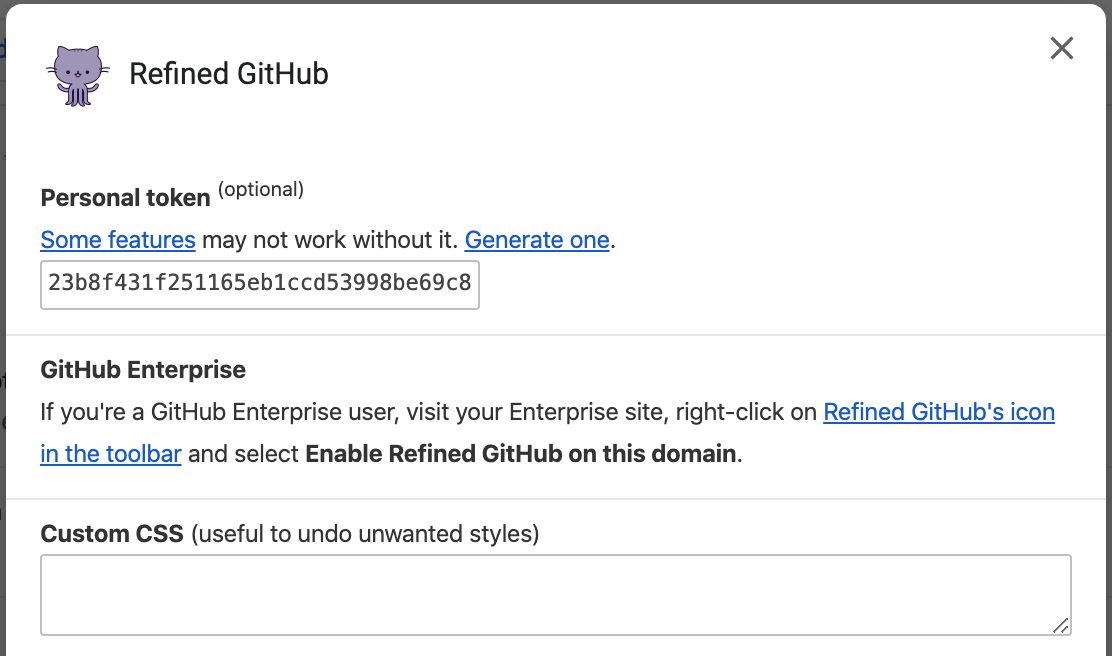
Research
/Security News
Critical Vulnerability in NestJS Devtools: Localhost RCE via Sandbox Escape
A flawed sandbox in @nestjs/devtools-integration lets attackers run code on your machine via CSRF, leading to full Remote Code Execution (RCE).
webext-base-css
Advanced tools
Extremely minimal stylesheet/setup for Web Extensions’ options pages (also dark mode)

Extremely minimal "native" stylesheet/setup for Web Extensions’ options pages (also dark mode)
It's meant to look as native as possible, invisible. webext-base-css is what browsers should offer by default.
Look at the demo options.html for the suggested markup (it's basic and not really enforced.)
| Demo: Chrome with light theme | Firefox with dark theme |
|---|---|
 |  |
Download the stylesheet manually or use npm:
npm install webext-base-css
<link rel="stylesheet" href="webext-base.css">
<link rel="stylesheet" href="your-own-stylesheet-if-necessary.css">
And in your manifest.json:
{
"options_ui": {
"page": "options.html",
}
}
💡 Tip: Also use webext-options-sync to manage and autosave your extension's options.
Depending on how your bundler is configured, you might be able to use one of these to import the module directly from node_modules. If you have issues or have a better solution, please send a PR or open an issue.
<!-- From options.html -->
<link rel="stylesheet" href="./node_modules/webext-base-css/webext-base.css">
// From options.js
import 'webext-base-css';
/* From options.css or .scss */
/* Pick one, it depends on your bundler/config */
@import 'webext-base-css';
@import '~webext-base-css';
@import '~webext-base-css/webext-base.css';
@import 'npm:webext-base-css'; /* Parcel */
@use 'webext-base-css';
Here's a minimal but full options.html example page:
<!doctype html>
<meta charset="utf-8">
<title>Options</title>
<link rel="stylesheet" href="webext-base.css">
<link rel="stylesheet" href="options.css">
<form>
<p>
<label for="name">Name</label><br>
<input type="text" id="name" name="name" spellcheck="false" autocomplete="off" required/>
</p>
<p>
<label>
<input type="checkbox" name="logging">
Show the features enabled on each page in the console
</label>
</p>
</form>
<script src="options.js"></script>
There are some extra classes you can use:
.text-monospace ideal for for <input> and <textarea> to have a monospace fontwebext-base-css-modal can be applied to HTML if you have a small options page but don't want to use options_ui. See the what it looks like.<input size="10"> to define the width of input fields, or else they're now set to 100% by default.<link rel="stylesheet" href="chrome://global/skin/in-content/common.css"> if you want to use Firefox's native style, but this means you'll have to handle the inconsistencies between web browsers. This used to be included in webext-base-css v1.FAQs
Extremely minimal stylesheet/setup for Web Extensions’ options pages (also dark mode)
We found that webext-base-css demonstrated a healthy version release cadence and project activity because the last version was released less than a year ago. It has 0 open source maintainers collaborating on the project.
Did you know?

Socket for GitHub automatically highlights issues in each pull request and monitors the health of all your open source dependencies. Discover the contents of your packages and block harmful activity before you install or update your dependencies.

Research
/Security News
A flawed sandbox in @nestjs/devtools-integration lets attackers run code on your machine via CSRF, leading to full Remote Code Execution (RCE).

Product
Customize license detection with Socket’s new license overlays: gain control, reduce noise, and handle edge cases with precision.

Product
Socket now supports Rust and Cargo, offering package search for all users and experimental SBOM generation for enterprise projects.